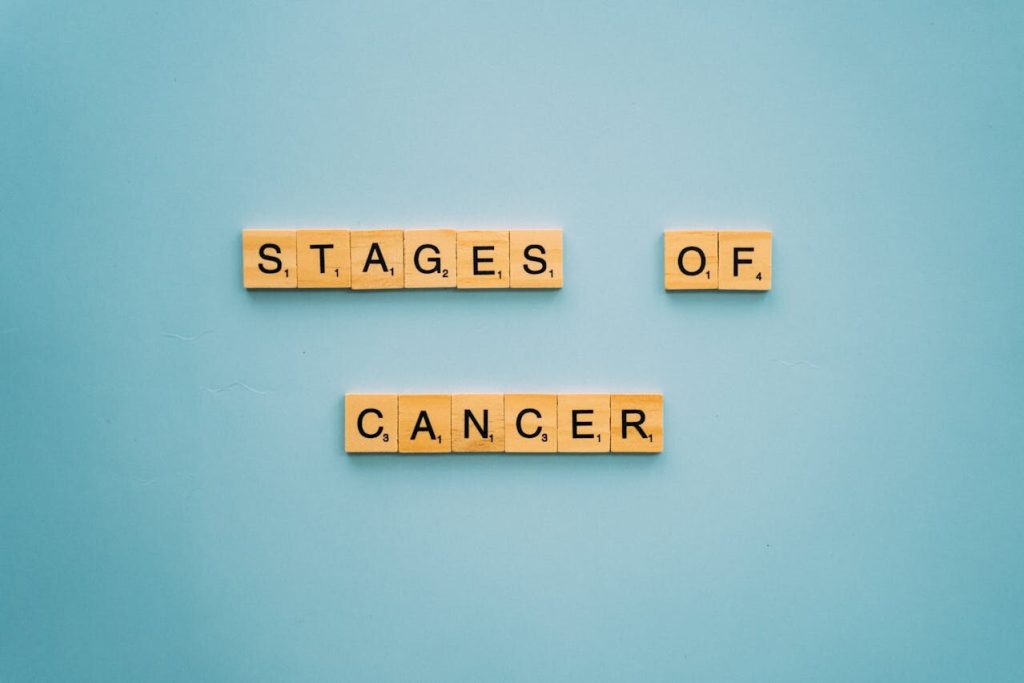Throat cancer is a serious diagnosis that requires early detection and prompt treatment. Unfortunately, many individuals with throat cancer may not experience symptoms until the disease has advanced, making diagnosis and treatment more difficult. This is why it’s essential to be aware of the risk factors and warning signs associated with throat cancer, and to seek expert medical consultation at the first signs of any potential problems.
In this article, we’ll take a closer look at diagnosing throat cancer, including expert insight on detection methods, symptoms, and treatment options. We’ll also emphasize the importance of early detection and the role it plays in the successful management of the disease.
Key Takeaways:
- Early detection is key in diagnosing and managing throat cancer.
- There are several risk factors and warning signs associated with throat cancer that individuals should be aware of.
- Diagnostic methods for throat cancer range from initial screenings to more invasive procedures like biopsies.
- Imaging tests like CT scans, MRI, and PET scans can help detect and assess the extent of the disease.
- The Cancer Center for Healing in Irvine, CA, offers comprehensive cancer care for throat cancer patients, including conventional and complementary therapies.
Understanding Throat Cancer: Types and Risk Factors
Throat cancer, also known as pharyngeal cancer, can occur in several parts of the throat, including the pharynx, larynx, and tonsils. The two main types of throat cancer are squamous cell carcinoma and adenocarcinoma. Squamous cell carcinoma is the most common type, accounting for approximately 90% of all cases. Adenocarcinoma is a rare type of throat cancer that develops in the glandular cells of the throat.
There are several risk factors that can increase an individual’s likelihood of developing throat cancer. The most common risk factors include:
- Tobacco use: Smoking and using smokeless tobacco can significantly increase the risk of developing throat cancer.
- Alcohol consumption: Heavy alcohol consumption is another significant risk factor for throat cancer.
- Human papillomavirus (HPV) infection: HPV is a sexually transmitted infection that can increase the risk of developing throat cancer, particularly in the oropharynx (the middle part of the throat).
- Age: Throat cancer is more common in individuals over the age of 50.
- Gender: Men are at a higher risk of developing throat cancer than women.
- Weak immune system: Individuals with weakened immune systems, such as those with HIV or who have undergone an organ transplant, are at a higher risk of developing throat cancer.
It is important to note that while these risk factors can increase the likelihood of developing throat cancer, they do not guarantee that an individual will develop the disease.
Symptoms of Throat Cancer: Recognizing the Warning Signs
Throat cancer can cause a variety of symptoms that may indicate the presence of the disease. It’s important to recognize these warning signs and seek medical attention if they persist. Below are some common symptoms of throat cancer:
- Hoarseness or changes in the voice
- A persistent sore throat
- Coughing up blood
- Difficulty swallowing or persistent indigestion
- Ear pain or unexplained hearing loss
- A lump or swelling in the neck
- Unexplained weight loss
It’s important to note that these symptoms can also indicate other, less serious conditions. However, if any of these symptoms persist for more than two weeks, it’s recommended to see a healthcare provider for further evaluation.
“If you’re experiencing any of these symptoms, it’s important to see a healthcare professional for an evaluation,” says Dr. Leigh Erin Connealy of the Cancer Center for Healing.
Diagnostic Methods for Throat Cancer: From Screening to Biopsy
The diagnostic process for throat cancer may include various methods, from initial screenings to more invasive procedures like biopsies. Each method serves a unique purpose in detecting and diagnosing throat cancer, and may be used in combination with others.
One of the first steps in the diagnostic process is a physical exam, where the healthcare provider will examine the throat and neck for any signs of abnormal growth or swelling. Imaging tests such as CT scans, MRI, and PET scans may also be used to assess the extent of the disease and identify any potential tumors.
Another common method for diagnosing throat cancer is through endoscopy, where a thin tube with a camera is inserted into the throat to examine the larynx, pharynx, and esophagus. This procedure allows for both visualization of the throat and the collection of tissue samples for further analysis.
Biopsy
One of the most accurate methods for diagnosing throat cancer is through a biopsy. During a biopsy, a small tissue sample is removed from the suspected tumor and examined under a microscope for cancerous cells. There are different types of biopsies that may be performed depending on the location and size of the tumor, including:
| Type of Biopsy | Description |
|---|---|
| Excisional Biopsy | The entire tumor is removed for analysis |
| Incisional Biopsy | A portion of the tumor is removed for analysis |
| Needle Biopsy | A small needle is inserted into the tumor to collect tissue samples for analysis |
While a biopsy is considered the gold standard for throat cancer diagnosis, it is not without risks. Complications such as bleeding, infection, and damage to surrounding tissues may occur, but are uncommon.
Overall, the diagnostic process for throat cancer involves a combination of methods to accurately detect and diagnose the disease. Seeking medical attention and undergoing recommended diagnostic tests is crucial in achieving an early and accurate diagnosis, which can greatly improve treatment outcomes and overall prognosis.
Imaging Tests: A Closer Look at Throat Cancer Detection
Imaging tests play an essential role in the detection and diagnosis of throat cancer. These tests use imaging technologies to get a detailed look at the structures inside the throat, providing valuable information about the size, location, and spread of the tumor.
Several imaging tests may be used to detect throat cancer, including:
| Imaging Test | Description |
|---|---|
| Computed Tomography (CT) Scan | A noninvasive test that uses X-rays to produce detailed images of the throat. |
| Magnetic Resonance Imaging (MRI) | A noninvasive test that uses powerful magnets and radio waves to produce detailed images of the throat. |
| Positron Emission Tomography (PET) Scan | A test that uses a special dye to identify areas of high metabolic activity in the body, which can indicate the presence of cancer. |
These imaging tests may be used alone or in combination to provide a more comprehensive view of the cancer. They can also be used to monitor the effectiveness of treatment and track any changes in the tumor.
It’s important to note that imaging tests are not always definitive and may require further confirmation through a biopsy or other diagnostic test. However, they can provide valuable information in the early detection and diagnosis of throat cancer.
Biopsy: The Gold Standard in Throat Cancer Diagnosis
When it comes to definitively diagnosing throat cancer, a biopsy is typically performed. A biopsy involves taking a tissue sample from the affected area, which is then examined under a microscope to determine if cancer cells are present. Biopsies can be performed in a variety of ways depending on the location of the cancer, including:
| Type of Biopsy | Description |
|---|---|
| Endoscopic biopsy | A thin, flexible tube with a camera is passed down the throat to collect tissue samples from the affected area. |
| Needle biopsy | A thin needle is used to extract tissue samples from the affected area. This may be done during an ultrasound or CT scan for guidance. |
| Surgical biopsy | A portion of the affected tissue is removed through surgery and examined in a lab. |
While biopsies can be invasive, they are considered the gold standard in diagnosing throat cancer. They provide a clear, definitive answer, allowing doctors to move forward with developing a treatment plan tailored to the patient’s specific diagnosis.
Types of Biopsy
There are several types of biopsy, including:
- Excisional biopsy: A small amount of tissue is removed from the affected area surgically and examined under a microscope.
- Incisional biopsy: A small incision is made in the affected area, and a sample of tissue is removed for examination.
- Core needle biopsy: A needle is used to extract a small amount of tissue from the affected area for examination.
- Fine needle aspiration biopsy: A very thin needle is used to extract a small sample of cells from the affected area for examination under a microscope.
Each type of biopsy has its pros and cons depending on the location and extent of the cancer. Your doctor will determine which type of biopsy is appropriate for your particular case.
Seeking Expert Medical Consultation: The First Step to Diagnosis
If you are experiencing any symptoms of throat cancer or have a family history of the disease, it is essential to seek medical attention. Early detection is crucial in the successful management of throat cancer. A healthcare provider can perform a thorough evaluation and order diagnostic tests to determine if cancer is present.
It’s important to select a trusted medical professional who specializes in the diagnosis and treatment of throat cancer. A specialist can provide expert insight and guidance throughout the diagnosis and treatment process, ensuring that you receive the most effective treatment plan for your unique needs.
Comprehensive Cancer Care at the Cancer Center for Healing
The Cancer Center for Healing, located in Irvine, CA, is a holistic healing facility that offers comprehensive cancer care. Under the guidance of Dr. Leigh Erin Connealy, the center provides a range of treatment modalities for various types of cancers, including throat cancer.
| Comprehensive Approach | Complementary Therapies |
|---|---|
| The Cancer Center for Healing takes a comprehensive approach to cancer care, addressing not only the physical aspects of the disease but also the psychological and emotional impact on patients and their families. | In addition to conventional treatments, the center offers complementary therapies such as nutritional counseling, acupuncture, and mind-body medicine to support patients’ overall health and well-being. |
At the Cancer Center for Healing, patients receive individualized care tailored to their specific needs and preferences. The center’s multidisciplinary team of experts works collaboratively to develop a personalized treatment plan for each patient.
For patients with throat cancer, the Cancer Center for Healing offers a range of conventional treatments, including surgery, radiation, and chemotherapy. In addition, the center’s integrative approach includes complementary therapies that can help manage treatment side effects and improve overall quality of life.
Patients at the Cancer Center for Healing also have access to a variety of supportive care services, including nutritional support, counseling, and mindfulness-based stress reduction. The center’s goal is to help patients not only survive but thrive during and after cancer treatment.
Treatment Options for Throat Cancer: A Multidisciplinary Approach
Throat cancer treatment varies depending on the stage and location of the cancer, as well as the overall health of the patient. A multidisciplinary approach that combines different treatment modalities is often recommended to achieve the best possible outcomes. Treatment options for throat cancer may include:
| Conventional Treatments | Complementary Therapies |
|---|---|
| Surgery to remove the cancerous tumor | Acupuncture to manage pain and stress |
| Radiation therapy to destroy cancer cells | Mind-body techniques, such as meditation and yoga |
| Chemotherapy to kill cancer cells | Nutritional counseling to support overall health and well-being |
At the Cancer Center for Healing in Irvine, CA, we offer comprehensive cancer care that combines conventional treatments with evidence-based complementary therapies. Our integrative approach is designed to address the physical, emotional, and spiritual needs of our patients.
Our team of experienced healthcare providers works closely with patients to develop personalized treatment plans that prioritize their goals and values. We believe in empowering patients to make informed decisions about their care and providing them with the support they need to achieve optimal health and wellness.
Supportive Care for Throat Cancer Patients: Managing Side Effects
Throat cancer treatment can be physically and emotionally challenging for patients, and managing side effects is an important aspect of supportive care. The Cancer Center for Healing offers a range of supportive care services to help patients cope with treatment-related symptoms and maintain their overall well-being.
| Supportive Care Services | How They Help |
|---|---|
| Acupuncture | Reduces pain, nausea, and other treatment-related symptoms |
| Massage Therapy | Relieves muscle tension, stress, and anxiety |
| Nutritional Counseling | Provides guidance on healthy eating and managing treatment-related side effects |
| Mind-Body Therapies | Helps patients manage stress and anxiety through techniques such as meditation and yoga |
| Support Groups | Provides emotional support and a sense of community for patients and their loved ones |
In addition to these services, the Cancer Center for Healing also offers comprehensive pain management and palliative care to help alleviate symptoms and improve quality of life for patients with advanced stage disease.
Managing side effects is an important part of throat cancer treatment, and the Cancer Center for Healing is committed to providing comprehensive supportive care services to help patients navigate the challenges of treatment and maintain their overall health and well-being.
Lifestyle Modifications for Throat Cancer Prevention and Recovery
Making lifestyle modifications can help prevent throat cancer and support recovery for patients. Here are some practical tips and recommendations to incorporate into your daily routine:
- Quit smoking and avoid tobacco products, including secondhand smoke
- Limit alcohol consumption
- Maintain a healthy diet with plenty of fruits and vegetables
- Stay physically active and engage in regular exercise
- Practice good oral hygiene and visit the dentist regularly
- Protect yourself from human papillomavirus (HPV) through vaccination and safe sex practices
- Manage stress through relaxation techniques like yoga, meditation, or deep breathing exercises
Remember, lifestyle modifications are not a substitute for medical treatment. Always seek expert medical care if you experience any symptoms or risk factors.
Prognosis and Survival Rates for Throat Cancer
The prognosis for throat cancer can vary depending on various factors, such as the stage of the cancer at diagnosis, the location of the cancer in the throat, and the patient’s overall health. However, early detection and treatment offer the best chance for successful management of the disease and improved outcomes.
According to the American Cancer Society, the overall five-year survival rate for throat cancer is approximately 64%. However, this rate can vary widely depending on the stage of the cancer at diagnosis. For example, the five-year survival rate for localized throat cancer (cancer that has not spread beyond the throat) is approximately 84%, while the rate drops to 39% for cancer that has spread to distant parts of the body.
Other factors that can influence prognosis and survival rates for throat cancer include the age and overall health of the patient, as well as the specific type and location of the cancer. Treatment options and the patient’s response to treatment can also impact outcomes.
It is important for individuals with potential symptoms or risk factors for throat cancer to seek prompt medical attention and undergo appropriate diagnostic testing. Early detection and treatment offer the best chance for successful management of the disease and improved outcomes.
Research and Advances in Throat Cancer Diagnosis and Treatment
Research into the diagnosis and treatment of throat cancer is ongoing, with new developments and advances emerging regularly. These innovations have the potential to improve outcomes for patients and enhance the accuracy and effectiveness of existing diagnostic methods and treatment modalities.
Advances in Imaging
Advances in imaging technology have revolutionized the way doctors detect and assess throat cancer. High-resolution CT scans and MRI have become the standard for diagnosing and staging the disease, allowing for more accurate assessments of tumor size, location, and invasiveness. Additionally, Positron Emission Tomography (PET) scans, a relatively new diagnostic tool, are increasingly being used to complement CT and MRI scans, providing even more nuanced information about the extent and spread of the cancer.
Genetic Testing
As our understanding of genetics and cancer advances, genetic testing is becoming an increasingly important tool in diagnosing and treating throat cancer. Some types of throat cancer are linked to specific genetic mutations, such as the Human Papillomavirus (HPV). By identifying these mutations, doctors can tailor treatment to an individual’s unique genetic makeup, potentially increasing its effectiveness and improving outcomes.
Immunotherapy
Immunotherapy has emerged as a promising new treatment modality for throat cancer. This approach harnesses the power of the immune system to target and destroy cancer cells, often with fewer side effects than traditional chemotherapy or radiation. Immunotherapy can be used as a standalone treatment or in combination with other therapies, such as surgery or radiation, to increase their effectiveness.
Targeted Therapy
Targeted therapy is another exciting development in the treatment of throat cancer. This approach uses drugs that target specific molecules or proteins on cancer cells, effectively blocking their growth and proliferation. Targeted therapy can be used alone or in combination with other treatments, such as radiation or chemotherapy, to improve outcomes for patients.
As research into throat cancer continues, it is likely that new developments and innovations will continue to emerge, offering hope for improved treatment outcomes and quality of life for patients.
Conclusion: Early Detection Saves Lives
Throat cancer can be a challenging disease to diagnose and treat, but early detection is key to successful outcomes. As this article has shown, there are a variety of diagnostic methods and treatment options available to patients. Seeking expert medical consultation is the first step in the diagnosis process, and a multidisciplinary approach to treatment can lead to better outcomes.
At the Cancer Center for Healing in Irvine, CA, patients can receive comprehensive cancer care under the guidance of Dr. Leigh Erin Connealy. The center offers a range of treatment modalities, including conventional therapies and complementary therapies like acupuncture and nutrition counseling. Supportive care services are also available to help patients manage treatment side effects and promote overall well-being.
Prevention and self-care are also important components of managing throat cancer. Lifestyle modifications like eating a healthy diet, staying physically active, and avoiding tobacco and excessive alcohol consumption can help reduce the risk of developing the disease. Regular screening and staying informed about the latest advances in diagnosis and treatment can also increase the chances of successful outcomes.
In summary, early detection saves lives when it comes to throat cancer. By taking action and seeking medical attention at the first sign of symptoms or risk factors, patients can receive timely, comprehensive care that can lead to better outcomes. Contact the Cancer Center for Healing today to schedule a consultation and learn more about their approach to cancer care.
FAQ
Q: What is throat cancer?
A: Throat cancer refers to the presence of malignant tumors in the throat area, including the voice box, tonsils, and vocal cords.
Q: What are the common risk factors for throat cancer?
A: Common risk factors for throat cancer include smoking, heavy alcohol consumption, exposure to certain chemicals and irritants, and infection with human papillomavirus (HPV).
Q: What are the symptoms of throat cancer?
A: Common symptoms of throat cancer include persistent hoarseness, difficulty swallowing, a lump or mass in the throat, ear pain, weight loss, and a chronic cough.
Q: How is throat cancer diagnosed?
A: Throat cancer is diagnosed through various methods, including physical examinations, imaging tests (such as CT scans and MRI), and biopsies.
Q: What are imaging tests used for in throat cancer diagnosis?
A: Imaging tests are used to obtain a closer look at the throat and surrounding structures. They can help detect abnormalities, assess the extent of the disease, and guide treatment planning.
Q: What is a biopsy and why is it important in throat cancer diagnosis?
A: A biopsy involves the removal of a tissue sample for examination under a microscope. It is the gold standard for diagnosing throat cancer and can provide definitive information about the presence and type of cancer cells.
Q: Why is it important to seek expert medical consultation for throat cancer?
A: Expert medical consultation is crucial for individuals with potential symptoms or risk factors for throat cancer. A healthcare professional can perform thorough evaluations, order necessary tests, and provide appropriate treatment recommendations.
Q: What treatment options are available for throat cancer?
A: Treatment options for throat cancer may include surgery, radiation therapy, chemotherapy, targeted therapy, and immunotherapy. The choice of treatment depends on various factors, including the stage and type of cancer, as well as the patient’s overall health.
Q: How can supportive care help throat cancer patients?
A: Supportive care plays a vital role in managing the side effects of throat cancer treatment and improving quality of life. It may include pain management, nutritional support, psychological counseling, and integrative therapies.
Q: What lifestyle modifications can help prevent and support recovery from throat cancer?
A: Adopting a healthy lifestyle, including regular exercise, a balanced diet, and avoiding tobacco and excessive alcohol consumption, can help reduce the risk of throat cancer. After diagnosis, maintaining good nutrition and overall well-being is important for supporting recovery.
Q: What is the prognosis and survival rate for throat cancer?
A: The prognosis and survival rates for throat cancer vary depending on factors such as the stage of the cancer, the overall health of the patient, and the effectiveness of treatment. It is important to consult with a healthcare professional for personalized information.
Q: What research and advances are being made in throat cancer diagnosis and treatment?
A: Ongoing research is exploring new diagnostic techniques, targeted therapies, and immunotherapies for throat cancer. Advancements in imaging technologies and personalized medicine are also showing promise in improving outcomes for patients.






